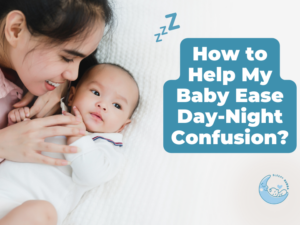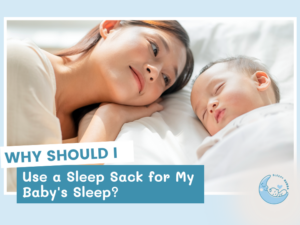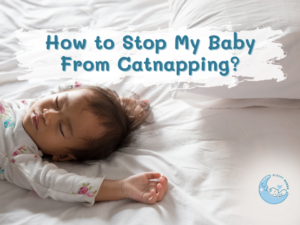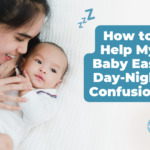Enquire Now with FREE 15 Mins Call
Does White Noise Machine Help My Baby Sleep Better?
In the realm of parenting, especially for those seeking advice from a baby sleep specialist Singapore, the quest for a good night’s sleep for both parents and their babies is often a top priority. Among these strategies, white noise machines have gained popularity as a potential aid in helping babies sleep better. You may be intrigued by the question: Does a white noise machine genuinely assist in improving a baby’s sleep patterns?
White noise is generated by blending various frequencies. Generally, when people refer to “white noise,” it means any steady sound used for sleep or relaxation. The concept of employing white
noise to soothe babies isn’t new. Its consistent, gentle sound mimics the womb’s environment, offering familiarity and comfort to newborns. Many parents have found that white noise machines can potentially help their babies fall asleep faster and enjoy longer uninterrupted sleep.
The Science of White Noise Machine
Understanding the science behind white noise unveils its effectiveness. White noise works by masking sudden loud noise that could disturb a baby’s sleep, creating a consistent audio backdrop that shields against disruptive noises like traffic, household chatter, or other environmental sounds. By providing a steady sound environment, white noise assists in lulling babies into a deeper and more peaceful slumber.
When it comes to white noise, there isn’t just one type. Different types of white noise exist, each offering varying sound frequencies and characteristics. Some common variations include pink noise, brown noise, and grey noise, each with its unique sound profile. Pink noise, for instance, has a more balanced range of frequencies, resembling the sound of steady rainfall or rustling leaves. Brown noise has a deeper, rumbling quality, akin to thunder or a waterfall. Grey noise, on the other hand, provides a smoother, constant sound, similar to the sound of wind blowing through trees.
Besides aiding sleep, white noise machines have demonstrated the potential to support other aspects of a baby’s development. Research suggests that exposure to consistent, gentle sounds like white noise might contribute positively to a baby’s cognitive development. The hypothesis is based on the notion that a stable auditory environment provided by white noise could aid in neural development, potentially enhancing cognitive functions such as attention, memory, and information processing in infants.
However, the usage of white noise machines as a sleep aid for babies isn’t a universal remedy. While some infants respond positively to the soothing hum of white noise, others may not find it as comforting. Every baby is unique, and what works for o ne might not yield the same results for another. Nevertheless, as professionals in the field, considering the incorporation of white noise into your recommendations might diversify sleep strategies effectively.
Guidelines When Using a White Noise Machine
Safety measures should be considered before integrating a white noise machine into a baby’s sleep routine. Ensure the volume remains at a safe level, preventing discomfort or potential harm to the baby’s ears. The Centers for Disease Control and Prevention (CDC) recommends that a safe decibel level for infants means keeping the volume under 60 dB. One easy way to gauge if the sound level is appropriate is by holding the white noise machine at arm’s length. If you can comfortably hear the sound without straining, it’s likely at a suitable volume for your baby.
Besides, placing the white noise machine at a reasonable distance from the baby’s crib is crucial. Experts generally recommend positioning the white noise machine around three to six feet away from the baby’s sleeping area. This distance ensures that the sound isn’t too loud or too close, providing soothing benefits without overwhelming the baby’s sensitive hearing.
Incorporating white noise as part of a consistent sleep routine is essential. By including it in the baby’s bedtime ritual, parents signal to the infant that it’s time to wind down and sleep, establishing a predictable environment conducive to improved sleep habits.
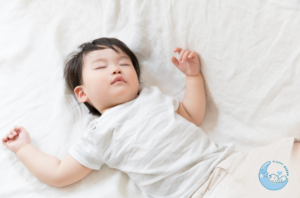
When and How Should I Stop Using White Noise Machine for My Baby?
In reality, there’s no need to discontinue the use of white noise machines for your baby’s sleep. Research indicates that employing a white noise machine for sleep offers benefits that extend well beyond infancy and into adulthood. But, if you choose to stop using a white noise machine for your baby’s sleep, here are 2 methods you can consider:
1. Cold Turkey
Pick a night to stop using the white noise machine and observe how your baby fares throughout the night. If you notice a negative impact on sleep, it’s perfectly fine to opt for the weaning method.
2. Weaning
Gradually decrease the volume on the white noise machine every few nights until it becomes so quiet that it’s no longer audible.
Conclusion
In conclusion, the use of white noise machines as part of a holistic sleep routine can potentially aid in enhancing a baby’s sleep by creating a soothing environment conducive to rest. However, it’s crucial to approach their usage carefully, considering each baby’s unique preferences and ensuring alignment with safe sleep practices. Buy a white noise machine now.
Should you seek to improve your baby’s sleep patterns, consider a baby sleep specialists Singapore to schedule a FREE 20-minute discovery call with us today. Our expertise and tailored advice can significantly help you achieve restful nights.


